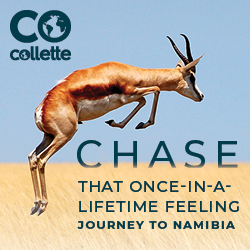For decades, the group tour industry took its demographics for granted: Everyone knew that tours were for retirees. But in today’s changing economy, successful affinity travel coordinators are rethinking those assumptions.
The concept of retirement has shifted from what it was even a generation ago. Many baby boomers, who don’t have the cushy pensions their parents did, are even after they reach retirement age to bolster their lagging 401(k) accounts or to supplement their investment earnings. Today’s seniors also are much healthier than previous generations, and many choose to work into their late 60s and beyond simply because they still enjoy their careers and feel like they have more to contribute.
As a result, many group tour planners are finding the pool of traditional retiree travelers shrinking. In order to keep affinity travel programs alive and well, it’s important to offer products that are attractive to working professionals. In addition to bringing more baby boomers into the fold, these types of trips might also be more attractive to Generation X and millennial travelers, bringing the potential for loyalty programs to reach a broader audience and build a sustainable future.
It’s About Time
In order to attract working travelers on group trips, planners need to understand what kind of experiences these people want and what kind of resources they have available to pursue them.
“Everyone these days is so time poor,” said Anbritt Stengele, the young founder of tour company Sports Traveler. “What we have been noticing is that the trips that working folks are looking for are shorter — usually two nights. Our events are all on the weekends, because they revolve around sports, and every major sporting event encompasses the weekend.”
Stengele said that her company’s average traveler is 44 years old and male — a demographic that is the polar opposite of the 70-something female population that has driven the group travel market for years. Trips to football games skew younger, while packages for the Masters and other golf events tend to attract a 50+ crowd. And some high-profile sports tours have a multigenerational appeal.
“We have events like the Tournament of Roses Parade or the Kentucky Derby which are becoming more family-oriented,” Stengele said. “We’re seeing people want to bring their children along. When that happens, the type of hotel you use becomes very important. Families gravitate more toward an Embassy Suites-style hotel, where you can have more space and close the door between a living room and a bedroom and get more family members into the room.”
In addition to fitting into short timeframes and offering appropriate hotel amenities, Sports Traveler has found that offering the right kind of experiences is key to succeeding with their target demographic.
“Sports travel is actually really popular with working folks,” Stengele said. “We have made our trips shorter and more inclusive, so they don’t require a rental car. All the transportation is included, and we usually have a hospitality party at the event. People want to be able to drink, have fun, meet an NFL player and get autographs, all in a short period of time.”
Keeping trips short helps keep prices low and allows the company to focus its resources on providing great experiences that travelers wouldn’t be able to arrange for themselves if they made a trip to the game on their own.
“Everyone is looking for good value, but in sports travel, that value means access,” Stengele said. “That’s access to areas or experiences that aren’t readily available to the general public. That means going on a behind-the-scenes tour, meeting a former player or taking part in some kind of exclusive event. Access and exclusivity are things our clients demand and expect.”
Valuing Independence
G Adventures, a global tour company that is quickly earning a reputation in the United States for its immersive cultural experiences and intimate group size, has a line of products aimed at the 18-to-39-year-old market. Called YOLO — a popular acronym for “you only live once ” — these tours feature 170 itineraries to worldwide destinations and most are only eight days long, allowing travelers to fit the experience within one week’s worth of vacation time.
Danny Tyrell, the company’s U.S. director of sales, said that these itineraries cater to younger travelers’ independent tastes and attitudes.
“Oftentimes in these packages, we don’t have a ton included,” he said. “We take care of your accommodations and make sure you have a guide, but almost none of the meals are included. That demographic would prefer to explore and set their own budget instead of going with the whole group to a restaurant to eat off a limited tour menu.
“We include all the essentials and make sure you see the must-see sights, but we leave a ton of freedom and flexibility. We want to make sure that millennial travelers can make their own experiences.”
Some of the company’s most popular YOLO trips include Costa Rica, Belize and Colombia — destinations that are easy to reach and that offer a lot of value for the travel dollar. Tours to Southeast Asia are longer, lasting up to a week and a half, but include visits to Vietnam, Thailand and Cambodia at a very low cost.
“You can’t promote a two-week river cruise and expect a millennial to get on it,” Tyrell said. “But if you promote an eight-day adventure tour for $999, you’ll get their attention.”
Tyrell said that independence, affordability and a sense of community are important selling points for bringing young working professionals into group travel.
“We really try to emphasize the meaningful connections that group travel can provide,” he said. “An affinity group is like-minded people, and young people can make strong bonds through this type of travel. So we emphasize things like fun and shared curiosity to that audience more than talking about what is included.”









